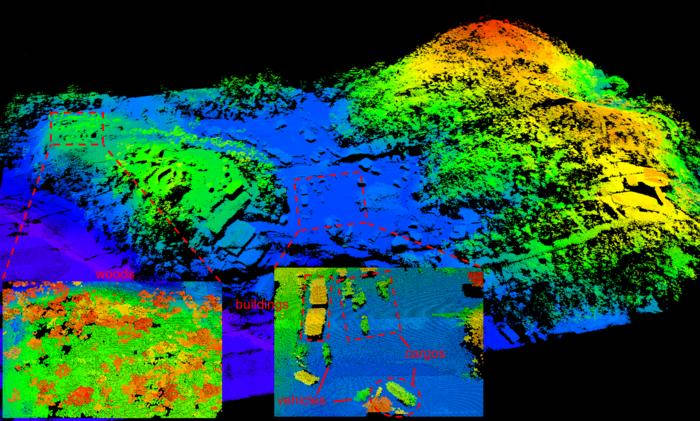

The best thing we can say about Tales of Kenzera: ZAU is that it’s a decent gateway game into the Metroidvania genre. The Switch is so chock full of incredible titles at this point that it can often be difficult to know where to start (we can help with that too, by the way), but Kenzera provides a relatively breezy 6-7-hour experience that should give you an indication as to whether or not to dip your toes in a bit further. For genre veterans, however, while the gameplay is certainly good enough to see you through to the end, there’s little here that hasn’t already been done elsewhere… and better, too.
What elevates the game, however, is its setting and story. If you’ve been following Tales of Kenzera’s development at all, you’ll know that a great deal of the plot takes inspiration from Sugent Studio’s creative lead, Abubakar Salim, and his personal experience dealing with parental loss. Incidentally, Salim (a stage and screen actor and the voice of Bayek in Assassin’s Creed Origins) also provides the voice for protagonist Zau, and we have to commend the voiceover work as a whole; it’s brilliantly done throughout and helps the plot resonate a lot more than if we were merely reading lines of dialogue.

Zau himself is on a journey to revive his deceased father by capturing the spirits of three monsters and offering them to Kalunga, the God of Death. Kalunga accompanies Zau in his quest and provides advice both practical and philosophical, and we have to admit that we relished every moment that the sagely spectre showed up. Overall, Kenzera’s story is a touching, heartfelt tale elevated by the performances of the voice actors, and were it not for this, we fear the game would have slipped from our memory almost immediately.
Now, we should stress that Kenzera’s gameplay is solid. Movement feels fluid, you’ve got a dash ability that’s almost always satisfying to pull off, and the combat, while certainly not deep or challenging, feels impactful and fun. The issue we have is that you can really tell that this is the studio’s first crack at a Metroidvania game; there’s very little challenge involved, exploration is kept at an absolute minimum, and the unlockable abilities don’t add a great deal of variety or depth.
The biggest disappointment for us comes with that lack of exploration. The very best Metroidvanias boast beautiful, interconnected worlds filled with secrets that make you want to go off the beaten track, and although Kenzera’s world is certainly beautiful, the branching paths amount to little more than linear corridors that lead to a specific goal. Once you’ve collected the required item or beaten the boss, you have to backtrack through the same corridors until you reach what we’d describe as a mini hub area. It’s only here that you can then unlock a new door or reach a new area to progress further.

Combat encounters are sprinkled throughout the experience. You’ll come across a few enemies on the fly as you make your way through the game, but most combat segments are limited to specific areas in which the exits are blocked off; kind of like Bayonetta or Devil May Cry.
You’ve got the option to take out your foes with melee attacks and long-range projectiles, and you can toggle between these with a tap of ‘L’, swapping out Zau’s sun and moon masks and thus altering his appearance and moveset. Some enemies are colour-coded to indicate their strengths and weaknesses, so the game does a good job of ensuring you’re not just sticking to one method of attack. Well, in theory at least.
Unfortunately, both enemy variety and the arenas where you battle them are limited. We like the combat, but when the 20th encounter feels exactly the same as the 1st, it gets awfully repetitive. You can try to mix up your strategy as much as you like, but when the game throws the same enemies at you in the same patterns over and over again, it’s hard not to just utilise the same offensive tactics every single time.

Thankfully, there are skill trees tied to each mask, so you can boost both your melee and long-range abilities independently. So for example, you can unlock a move in which you jump up and slam down into the ground to deal damage, or you can add an extra hit to your basic attack combo. Unlocking each new ability feels welcome, but it doesn’t add a great deal or depth or variety to the overall combat gameplay. Honestly, we kind of wish it were all just available right from the start.
In terms of its overall aesthetic, Kenzera is a colourful adventure that is probably best described as a cross between Ori and the Blind Forest and Prince of Persia: The Lost Crown. The map screen in particular looks like it was swiped straight from an Ori game, and to be clear, that’s really no bad thing. Unfortunately, like many multiplatform games these days, Kenzera does suffer from muddy visuals and stuttering frame rates on the Switch (though this is reportedly under investigation). It’s admittedly not as bad as we’d initially feared, but this is definitely one of those cases where if you have beefier hardware available, then we’d recommend playing it elsewhere.
Conclusion
Tales of Kenzera: ZAU is a decent game, but it sits in the shadow of much better Metroidvanias on the Switch. We love the setting and storyline, but as Surgent Studios’ first stab at what has proven to be a wildly popular genre over the years, it struggles to set itself apart with rather bland exploration and repetitive combat. Coupled with compromised visuals and performance on Switch, veterans of the genre may want to give this one a miss. For newcomers, however, the breezy gameplay might make for a nice introduction to Metroidvanias.

The best thing we can say about Tales of Kenzera: ZAU is that it’s a decent gateway game into the Metroidvania genre. The Switch is so chock full of incredible titles at this point that it can often be difficult to know where to start (we can help with that too, by the way), but Kenzera provides a relatively breezy 6-7-hour experience that should give you an indication as to whether or not to dip your toes in a bit further. For genre veterans, however, while the gameplay is certainly good enough to see you through to the end, there’s little here that hasn’t already been done elsewhere… and better, too.
What elevates the game, however, is its setting and story. If you’ve been following Tales of Kenzera’s development at all, you’ll know that a great deal of the plot takes inspiration from Sugent Studio’s creative lead, Abubakar Salim, and his personal experience dealing with parental loss. Incidentally, Salim (a stage and screen actor and the voice of Bayek in Assassin’s Creed Origins) also provides the voice for protagonist Zau, and we have to commend the voiceover work as a whole; it’s brilliantly done throughout and helps the plot resonate a lot more than if we were merely reading lines of dialogue.

Zau himself is on a journey to revive his deceased father by capturing the spirits of three monsters and offering them to Kalunga, the God of Death. Kalunga accompanies Zau in his quest and provides advice both practical and philosophical, and we have to admit that we relished every moment that the sagely spectre showed up. Overall, Kenzera’s story is a touching, heartfelt tale elevated by the performances of the voice actors, and were it not for this, we fear the game would have slipped from our memory almost immediately.
Now, we should stress that Kenzera’s gameplay is solid. Movement feels fluid, you’ve got a dash ability that’s almost always satisfying to pull off, and the combat, while certainly not deep or challenging, feels impactful and fun. The issue we have is that you can really tell that this is the studio’s first crack at a Metroidvania game; there’s very little challenge involved, exploration is kept at an absolute minimum, and the unlockable abilities don’t add a great deal of variety or depth.
The biggest disappointment for us comes with that lack of exploration. The very best Metroidvanias boast beautiful, interconnected worlds filled with secrets that make you want to go off the beaten track, and although Kenzera’s world is certainly beautiful, the branching paths amount to little more than linear corridors that lead to a specific goal. Once you’ve collected the required item or beaten the boss, you have to backtrack through the same corridors until you reach what we’d describe as a mini hub area. It’s only here that you can then unlock a new door or reach a new area to progress further.

Combat encounters are sprinkled throughout the experience. You’ll come across a few enemies on the fly as you make your way through the game, but most combat segments are limited to specific areas in which the exits are blocked off; kind of like Bayonetta or Devil May Cry.
You’ve got the option to take out your foes with melee attacks and long-range projectiles, and you can toggle between these with a tap of ‘L’, swapping out Zau’s sun and moon masks and thus altering his appearance and moveset. Some enemies are colour-coded to indicate their strengths and weaknesses, so the game does a good job of ensuring you’re not just sticking to one method of attack. Well, in theory at least.
Unfortunately, both enemy variety and the arenas where you battle them are limited. We like the combat, but when the 20th encounter feels exactly the same as the 1st, it gets awfully repetitive. You can try to mix up your strategy as much as you like, but when the game throws the same enemies at you in the same patterns over and over again, it’s hard not to just utilise the same offensive tactics every single time.

Thankfully, there are skill trees tied to each mask, so you can boost both your melee and long-range abilities independently. So for example, you can unlock a move in which you jump up and slam down into the ground to deal damage, or you can add an extra hit to your basic attack combo. Unlocking each new ability feels welcome, but it doesn’t add a great deal or depth or variety to the overall combat gameplay. Honestly, we kind of wish it were all just available right from the start.
In terms of its overall aesthetic, Kenzera is a colourful adventure that is probably best described as a cross between Ori and the Blind Forest and Prince of Persia: The Lost Crown. The map screen in particular looks like it was swiped straight from an Ori game, and to be clear, that’s really no bad thing. Unfortunately, like many multiplatform games these days, Kenzera does suffer from muddy visuals and stuttering frame rates on the Switch (though this is reportedly under investigation). It’s admittedly not as bad as we’d initially feared, but this is definitely one of those cases where if you have beefier hardware available, then we’d recommend playing it elsewhere.
Conclusion
Tales of Kenzera: ZAU is a decent game, but it sits in the shadow of much better Metroidvanias on the Switch. We love the setting and storyline, but as Surgent Studios’ first stab at what has proven to be a wildly popular genre over the years, it struggles to set itself apart with rather bland exploration and repetitive combat. Coupled with compromised visuals and performance on Switch, veterans of the genre may want to give this one a miss. For newcomers, however, the breezy gameplay might make for a nice introduction to Metroidvanias.








